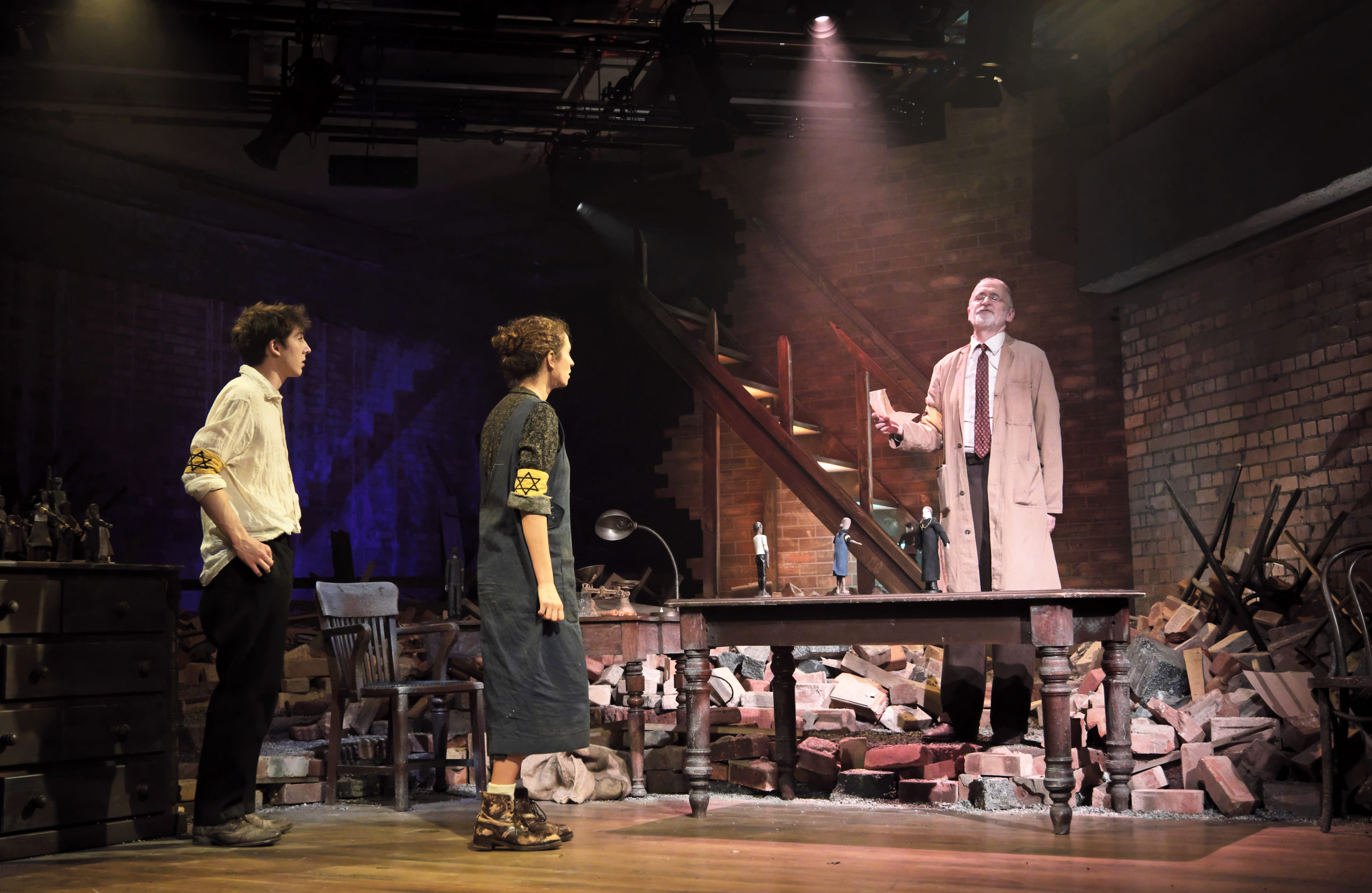Since the recent multi-million pound transformation of Leeds Playhouse, there are a myriad of outstanding features and facilities ready to greet theatregoers at the iconic Quarry Hill site.
Once past Chumbawamba’s life-affirming ‘I get knocked down, but I get up again’ in beguiling red neon, you are into an art space which, in the heart of the North, wraps itself around you in a way that confirms the creative sector continues to be at the forefront of the best kind of social and economic change.
Dr Korczak’s Example by David Greig begins its Leeds run in a week when we’re all being asked to remember the atrocities that took place across Europe under the Nazis. After the invasion of Poland, the Nazis herded the Jews into the newly created Warsaw Ghetto. Korczak was an eminent Polish paediatrician who also ran an orphanage – and he and the children he cared for were ‘resettled’ in the Ghetto.
The first moving moment comes on entering the intimate Bramall Rock Void, the amazing new third space beneath the theatre. The team responsible for the set design must receive the primary applause of the evening as they present a scene of utter devastation which immediately immerses you in the struggles of the Warsaw Ghetto. The production is supported by The Linbury Prize for Stage Design and what’s been created is breathtaking.
 Amid the wreckage of war, we are presented with the dignified Dr Korczak, played by Rob Pickavance. As he’s joined on stage by Adzio (Danny Sykes) and Stephanie (Gemma Barnett), he presses home to those assembled that “This happened. This actually happened.” Before adopting their characters fully, all three actors speak movingly about the reality behind the adaptation and leave the audience in no doubt of the lives lived by the doctor and his charges.
Amid the wreckage of war, we are presented with the dignified Dr Korczak, played by Rob Pickavance. As he’s joined on stage by Adzio (Danny Sykes) and Stephanie (Gemma Barnett), he presses home to those assembled that “This happened. This actually happened.” Before adopting their characters fully, all three actors speak movingly about the reality behind the adaptation and leave the audience in no doubt of the lives lived by the doctor and his charges.
The story begins with Korczak encountering and then preventing the summary execution of Adzio by a guard. Adzio is little more than a child and has been brutalised by the constant fight for survival in the Ghetto. The performance intelligently portrays the juxtaposition between the values and respect that form Korczak’s bedrock and Adzio’s belief that fighting and stealing is the only way to resist and survive.
Throughout the performance, our focus is drawn to the collection of puppets that resemble the kind of toys you might expect in a 1940s orphanage. These miniature figurines, together with the tabletop they inhabit, are used throughout by the actors to tell the story in a way that is incredibly emotional. In doing so, director James Brining and his team have created a powerful piece of theatre.
 Adzio’s struggle to accept kindness and adapt to Korczak’s belief in dignity as a form of resistance is a constant theme. Barnett as Stephanie breaks through his seemingly impenetrable layers of defence and a heart-warming bond develops that gives hope.
Adzio’s struggle to accept kindness and adapt to Korczak’s belief in dignity as a form of resistance is a constant theme. Barnett as Stephanie breaks through his seemingly impenetrable layers of defence and a heart-warming bond develops that gives hope.
As the Nazis cleared the Warsaw Ghetto and deportations to extermination camps accelerated, Dr Korczak tried valiantly to secure protection for his orphans but, inevitably, it was not to be. Although it is known that Korczak was provided with numerous opportunities to save himself, he accompanied the singing, flag-bearing children in his care on the train to Treblinka and death. Pickavance brilliantly portrays the moments leading up to departure as he carefully assembles a column of his puppet orphans on a superbly lit tabletop. The moment is harrowing.
Images by Zoe Martin





Dr Korczak’s Example is at Leeds Playhouse until February 15, 2020. For more information or to book tickets, click here.
Some performances are BSL interpreted and on February 5 there is a post-show discussion with holocaust survivor Arek Hersch MBE.




